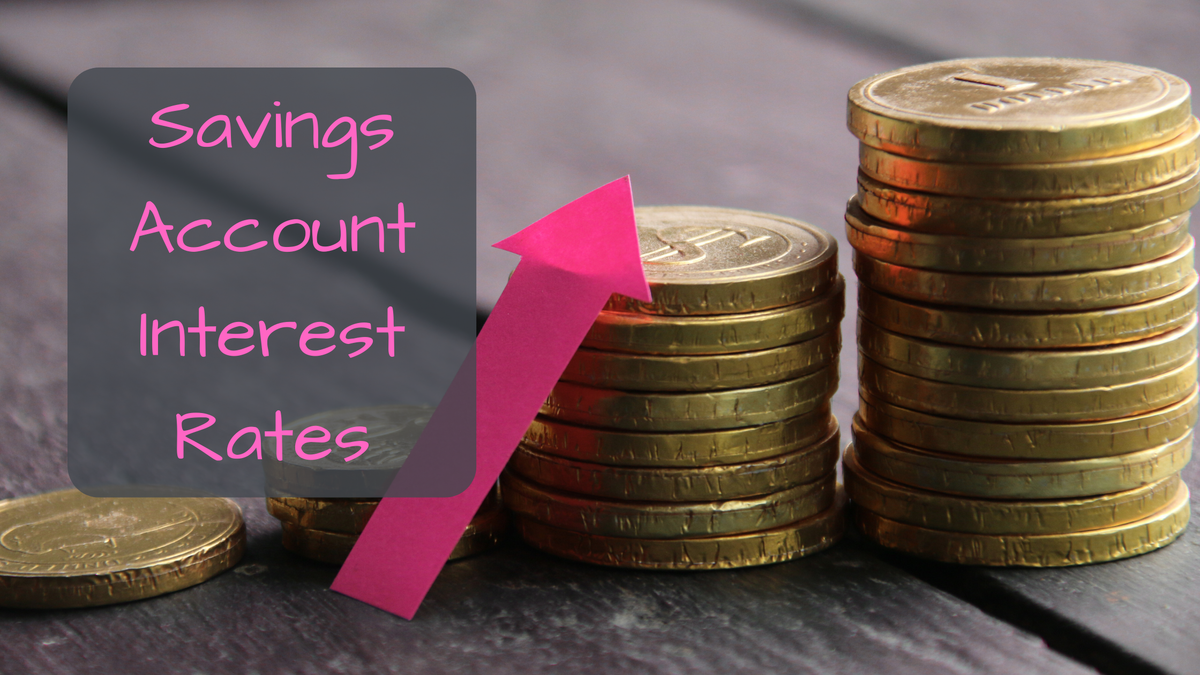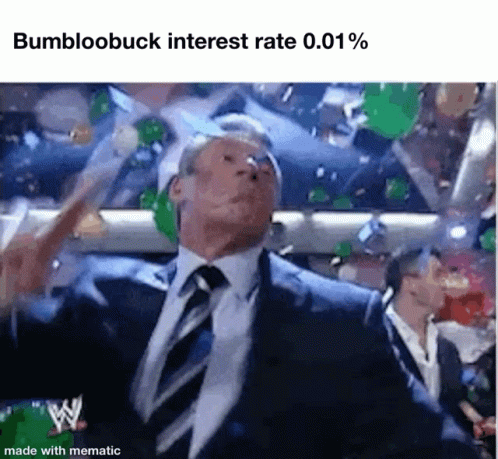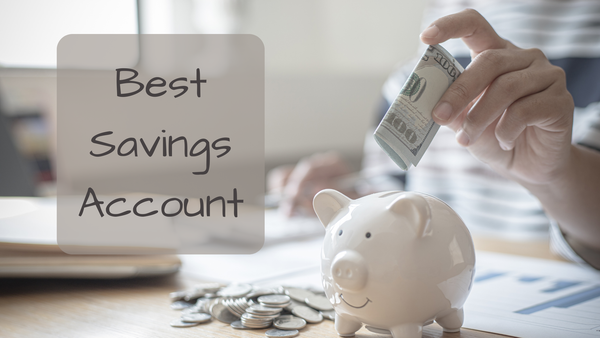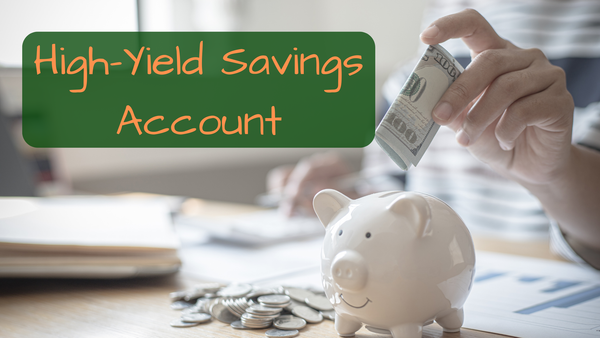Savings Account Interest Rates: What You Need to Know
Most savings accounts barely earn interest. This blog breaks down how to find a high-interest account, how compound interest works, and how to make your money grow—without doing more work. Includes tips, tools, and a free guide to help you get started.

Let’s be honest—most of us grew up thinking a savings account was just where you parked your money to “be responsible.” But what nobody told us? Most traditional savings accounts barely pay you a dime in interest—and that’s if they pay you anything at all.
In a time when groceries cost more, rent is up, and surprise expenses are everywhere, you deserve a savings account that actually helps you—not one that just sits there collecting dust (and 0.01% interest).
So, let’s break it all down:
What do traditional savings accounts really offer?
What should you be looking for instead?
And how can compound interest help you make the most of your money with zero extra effort?
What Is the Typical Savings Account Interest Rate?
If you’re banking with a big-name brick-and-mortar institution—think Wells Fargo, Chase, or Bank of America—chances are your savings account is earning something dismal like 0.01% APY.
Here’s what that looks like in real life:
- You put $1,000 in a savings account
- You don’t touch it for an entire year
- You earn $0.10 in interest
Yep. Ten cents. For keeping your money in their bank.
Why is it so low? Because traditional banks have higher overhead (buildings, staff, ATMs, etc.) and they’re not incentivized to pay you more.
But there’s a better option—and you don’t have to switch your entire financial life to make it happen.

The Power of Higher Interest Rates (and Compound Interest)
Enter: the high-yield savings account (HYSA).
These are usually online-only accounts (like Ally, SoFi, or Capital One 360) that pay you 3%–5% APY—sometimes more.
Even better? Most HYSAs compound interest daily, which means:
- You earn interest on your deposit
- Then you earn interest on the interest
- And it keeps stacking over time
📌 Real-Life Example:
Let’s say you put $1,000 into a HYSA earning 4.5% APY with daily compounding.
- After 1 year, you’d earn about $46—automatically.
- That’s 460x what you’d get from a traditional account paying 0.01%.
You didn’t hustle. You didn’t budget harder. You just put your money in the right place and let it work for you.
What Is Compound Interest—and Why Should You Care?
Compound interest is what separates a smart saver from a stuck saver.
It’s when your money earns interest—and then that interest earns interest—and the process repeats.
It’s like putting your money on a treadmill that moves a little faster every day without you doing anything extra.
Here’s What It Looks Like in Real Life:
Let’s say you deposit $5,000 into a HYSA that compounds interest daily at 4.5% APY.
- After 1 year: You’ve earned over $230
- After 3 years: Over $700
- After 5 years: Nearly $1,300
- All without adding a single dollar more
Now imagine doing that while contributing a small amount monthly.
This is how people build wealth slowly, safely, and without becoming stock market experts or side hustle machines.
It’s not magic. It’s financial literacy—and you deserve to understand it.
👉 That’s why I put together a free resource called “7 Money Rules You Must Learn Before It’s Too Late.”
It breaks down essential lessons like this in a way that actually makes sense.
You can grab your free copy here.
Why Most People Miss Out on This
Because we were never taught how money actually works.
Nobody told us to look at APY when opening a savings account.
Nobody explained compound interest or how the bank makes money off our deposits.
We just did what our parents did—opened an account at the local bank and hoped for the best.
But guess what? It’s never too late to learn.
That’s why I created a free guide called “7 Money Rules You Must Learn Before It’s Too Late.”
It breaks down these essential concepts so you can make confident, informed choices moving forward.
👉 Grab your free copy here
Not Ready to Switch Banks Completely?
You don’t have to ditch your current bank to benefit.
Many people keep their checking account at their main bank and open a separate high-yield savings account at an online bank. Then they automate monthly transfers to build their savings quietly in the background.
Think of it like this:
- Checking = everyday spending
- Online savings = out-of-sight, growing emergency fund
Need help tracking your savings goals?
👉 Check out my Financial Planner Bundle ($47). It includes:
- A savings tracker
- Budget worksheets
- Income + expense logs
- Goal-setting printables
All downloadable and super beginner-friendly.
What to Look for in a Savings Account (Whether Traditional or Online)
Before you open (or switch) an account, ask:
- What is the APY? (3%+ is ideal)
- Is there compound interest? Daily is better than monthly.
- Are there monthly fees? (Avoid them!)
- Do you need a minimum deposit or balance?
- Is it FDIC-insured? (Must be.)
And if you're considering dipping your toe into side income while building your savings…

Boost Your Savings with Low-Energy Extra Income
Saving money is powerful. But earning more to save? That’s next-level.
That’s why I often recommend SendIt—a mail-in sweepstakes system that pays people to submit envelopes for legally required no-purchase entry offers.
Here’s how it works:
- You print and mail sweepstakes entries
- SendIt gives you templates, rules, and addresses
- You can earn up to $5 per envelope
No selling. No tech. No talking to strangers on the internet.
👉 Click here to learn more
10 envelopes = $50
100 envelopes = up to $500/month
It’s how I started earning real money from home—without burnout.
Financial Literacy = Long-Term Wealth
This all circles back to one thing: we were never taught this.
- We didn’t learn how to compare APYs
- We didn’t learn why fees matter
- We didn’t learn that compound interest could build wealth slowly, quietly, and automatically
That’s not our fault—but it is our responsibility now.
If you’ve ever felt like you're behind or like “you should already know this,” I promise you—you’re not alone.
Want support while you sort through your options?
👉 Book a free info strategy call with me and my gal, Joy.
We’ll help you figure out what’s best for your situation—whether that’s optimizing your savings, paying off debt, or starting from zero.
Your Money Deserves Better Than 0.01%
You work way too hard to let your savings sit around doing nothing.
Switching to a high-interest, compound-earning savings account is one of the simplest, smartest moves you can make—whether you’re starting from $50 or $5,000.
Because when your money works even a little bit harder, you don’t have to.
📌 Your Next Steps:
✔️ Download the Free 7 Money Rules Guide
✔️ Get the $47 Financial Planner Bundle
✔️ Book a Free Strategy Call with Me + Joy
✔️ Learn More About SendIt




